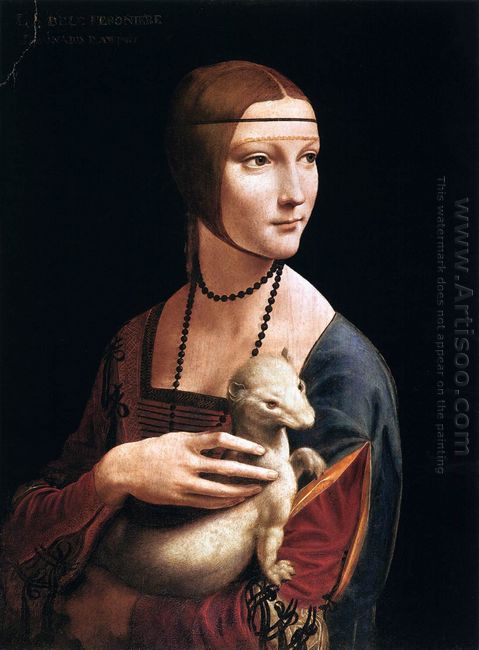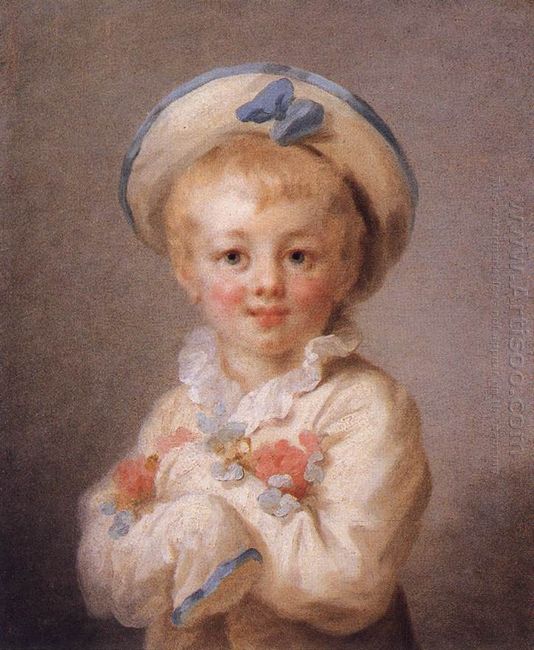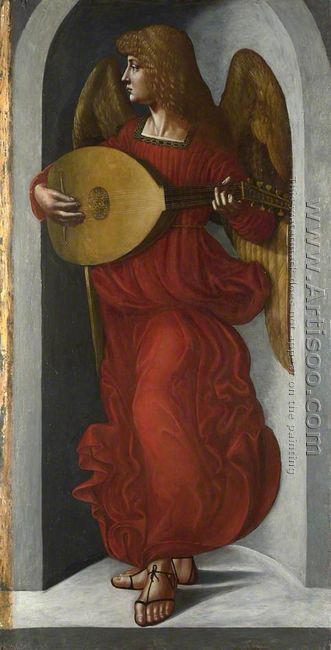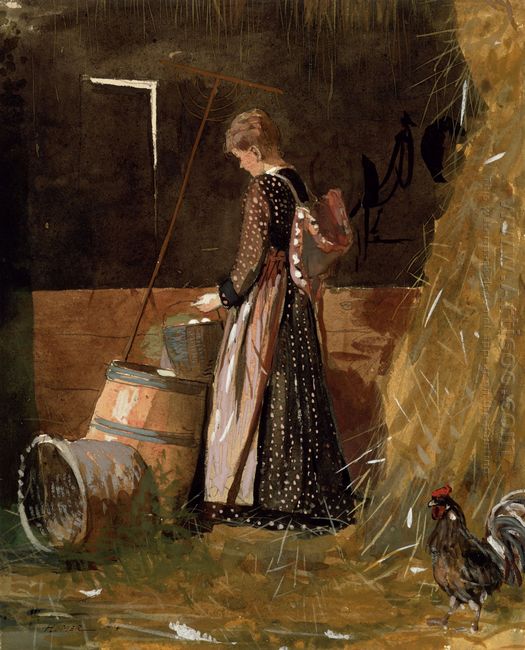Lady with the Ermine,which is also called Portrait of Cecilia Gallerani, is a painting by Leonardo da Vinci finished at the end of the 15th century. The character of this painting, Cecilia Gallerani, was the mistress of Ludovico Sforza, Duke of Milan. As Mona Lisa, Lady with the Ermine is one of only four portraits of women painted by Leonardo, which was famous as a breakthrough in the art of psychological portraiture.
In the painting, the lady slightly side sit, her facial expressions were soft and gentle, bathed in light. Leonardo grasped her attractions skillfully, and presented a dynamic, perfectly balanced description at the same time. Her face turned toward the right, which seems that she was listening to someone. Leonardo portrayed Cecilia Gallerani in this posture to show obvious characteristics of dynamic expression, and her statue-like noble and dignified temperament.
The animal cradled held in Cecilia's arms is known as an ermine that was a traditional symbol of virtue and purity, because it was said that this kind of animal would face death rather than soil its white coat. This ermine implied the identity of the person, in Greek ermine is "galée", which insinuated the lady's name Gallerani.
This exquisite portrait portrayed a noble lady who held a lifelike ermine in her arms, and it reflected da Vinci's profound painting skills. The process of lighting and shading is the most eye-catching part in this portrait which makes the face of Cecilia more graceful. That's why this painting deserved to be respected.












